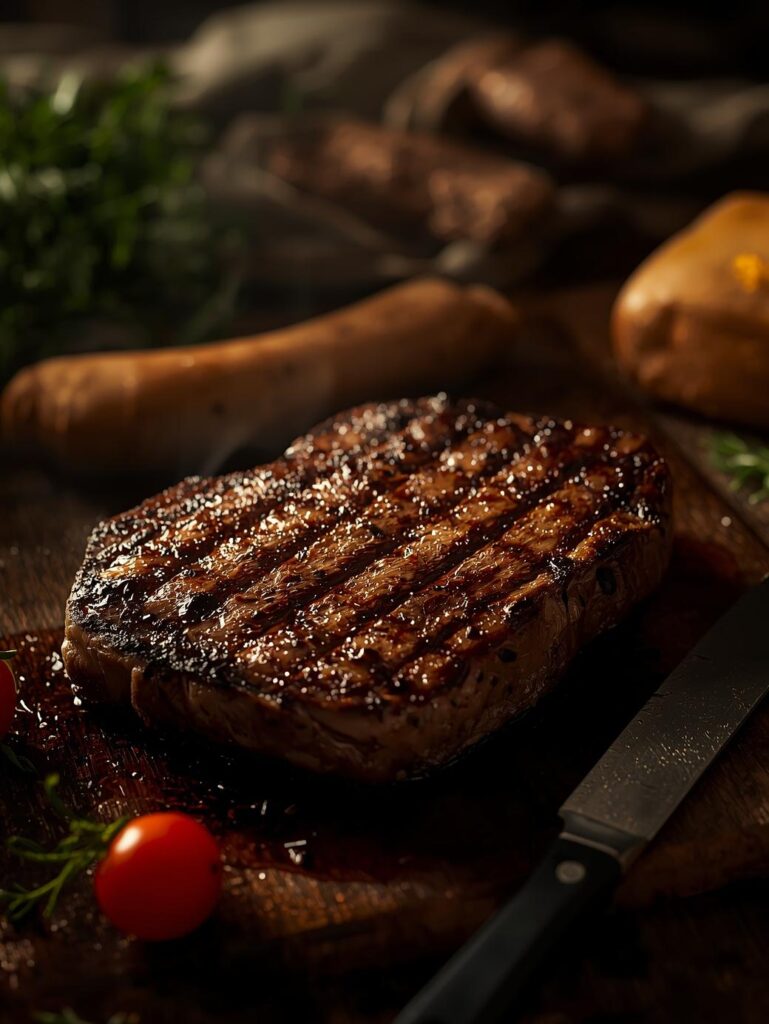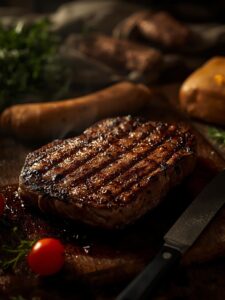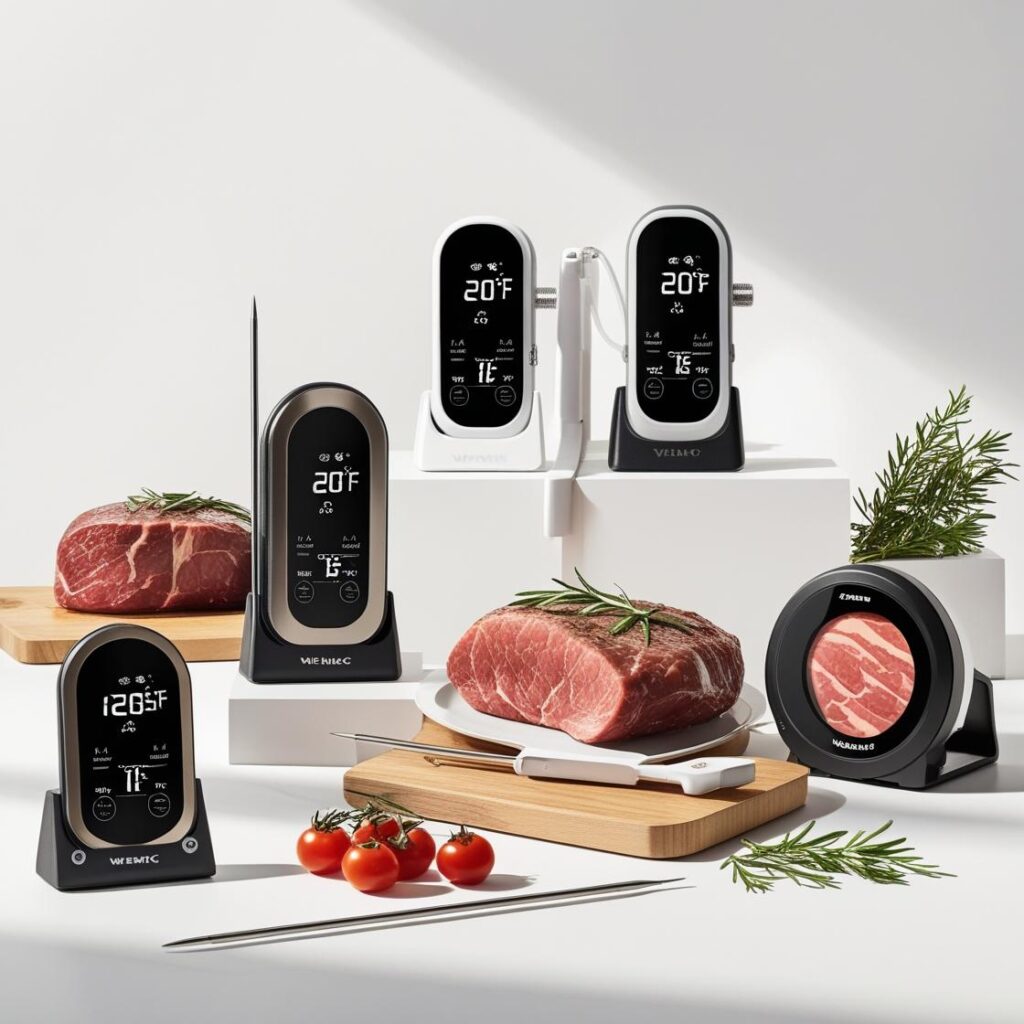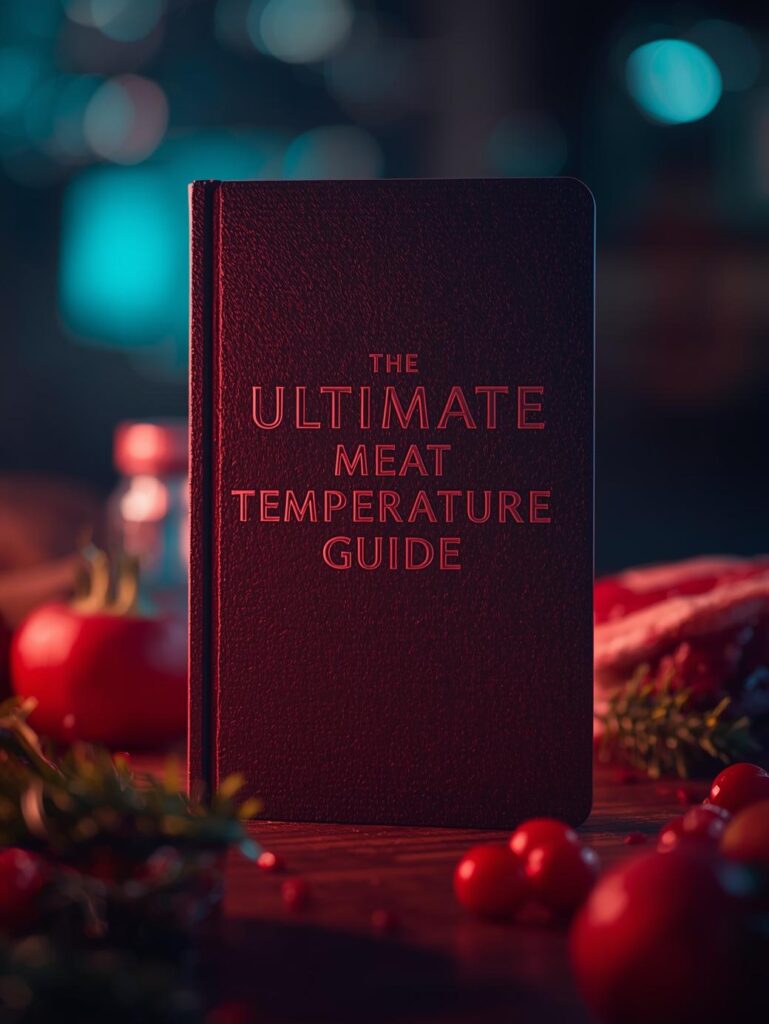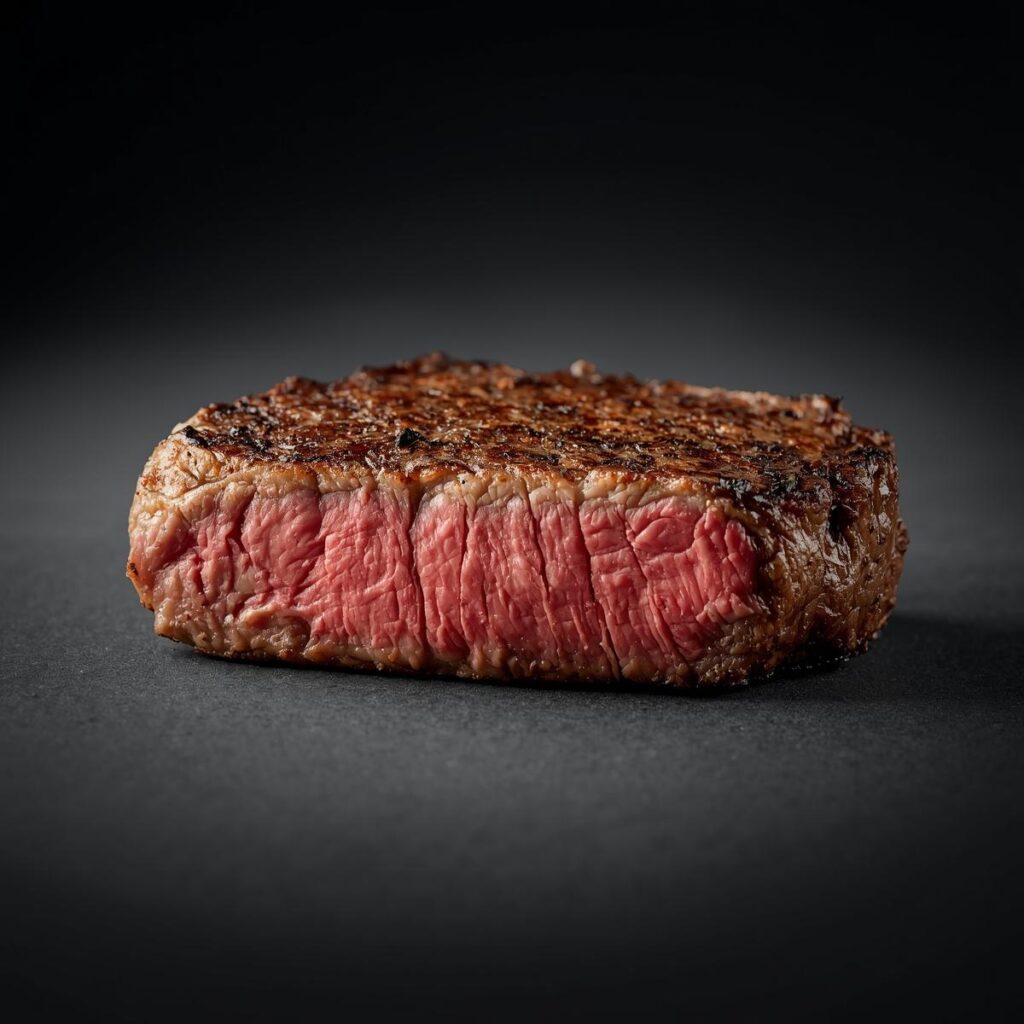Expert’s Note: This is the definitive resource from our Ultimate Guide to Grilling Steak. Understanding doneness science will eliminate guesswork and guarantee perfect results, transforming you from a hopeful griller to a precise pitmaster.
THE SCIENCE OF STEAK DONENESS: WHY TEMPERATURE BEATS TIMING EVERY TIME
“For decades, grillers have relied on flawed methods: the finger-poke test, counting minutes, or worse—cutting into the steak to peek. These are the rituals of guesswork. The truth is, doneness isn’t a visual art; it’s a thermal science. The difference between a perfect medium-rare and a disappointing medium isn’t measured in minutes, but in a mere 10°F that only a thermometer can reliably detect.”
Steak Doneness: Why Temperature Beats Timing Every Time
Download our free Steak Temperature & Doneness Cheat Sheet for quick reference.
The pursuit of perfectly cooked steak has spawned more myths and “secrets” than almost any other culinary endeavor. But strip away the folklore, and you’re left with simple, undeniable physics and food science. This guide will dismantle the old wives’ tales and replace them with actionable, scientific principles that guarantee perfect doneness every single time, regardless of steak thickness, grill temperature, or weather conditions.
🔬 THE THERMODYNAMICS OF STEAK: WHAT HAPPENS AS MEAT HEATS
Understanding what occurs at the molecular level inside your steak is the key to mastering doneness. It’s not magic—it’s predictable science.
⚙️ The Protein Transformation: From Raw to Ruined
As steak heats, its proteins undergo dramatic structural changes that directly affect texture and juiciness:
The Three Stages of Protein Denaturation
- 40-50°F: Myosin proteins begin to denature (unfold). This is the start of firming.
- 130-140°F: Collagen begins to dissolve into gelatin, adding juiciness.
- 150-160°F: Actin proteins denature significantly, squeezing out moisture and creating toughness.
💧 The Juice Equation: Where Your Steak’s Moisture Actually Goes
The common belief that “sealing in juices” is crucial is a myth. Juiciness comes from two sources:
Intramuscular Fat
The marbling within the steak melts between 130-140°F, basting the meat from within. This is why well-marbled steaks like ribeye remain juicy even if slightly overcooked.
Retained Moisture
As proteins denature, they tighten and squeeze out water. Cooking to the correct temperature minimizes this moisture loss. At 160°F+, a steak can lose over 30% of its moisture.
❌ WHY TIMING METHODS FAIL: THE VARIABLES THEY IGNORE
Time-based recipes are the number one cause of disappointing steak. Here’s why they’re fundamentally flawed.
📊 The Impossible Variables of Time-Based Cooking
🎯 Why “10 Minutes Per Side” Doesn’t Work
| Variable | Impact on Cooking Time | Why Timing Fails |
|---|---|---|
| Steak Thickness | 2x thickness = 4x cooking time | A 2″ steak takes much longer than 1″ |
| Starting Temperature | 40°F vs 70°F = 25% time difference | Fridge-cold vs “room temp” steak |
| Grill Temperature | ±50°F = ±40% time difference | No grill maintains perfect temp |
| Weather Conditions | Wind/cold = 20% longer | Outdoor grilling is unpredictable |
| Steak Density | Different cuts heat differently | Filet vs Strip cook at different rates |
🖐️ The Finger Test Fallacy: Why Touch Doesn’t Work
The popular “compare to your palm” method fails for several scientific reasons:
- Steak Firmness Changes with Resting: A steak continues to firm up as it rests due to carryover cooking.
- Individual Hand Anatomy Varies: Hand size, muscle density, and fat content differ between people.
- Different Cuts Have Different Textures: A ribeye and filet mignon feel different at the same temperature due to fat content.
- It’s Subjective: Without calibration, it’s just guessing with confidence.
Pro Tip: The Only Reliable “Touch” Test. If you must use touch, compare a raw steak’s feel to a cooked one. The difference is dramatic and obvious. But even this only tells you “cooked” vs “raw”—not the precise doneness level you’re aiming for.
🌡️ THE TEMPERATURE REVOLUTION: PRECISION COOKING SCIENCE
Temperature measurement removes all the guesswork and variables, giving you consistent, perfect results.
🎯 The Gold Standard: Internal Temperature Targets
🎯 Steak Doneness Temperature Guide (Final Serving Temp)
| Doneness | Temperature | Protein State | Result |
|---|---|---|---|
| Rare | 120-125°F | Myosin denatured | Cool red center, very tender |
| Medium Rare | 130-135°F | Optimal protein state | Warm red center, perfect balance |
| Medium | 140-145°F | Collagen breaking down | Warm pink center, slightly firm |
| Medium Well | 150-155°F | Significant moisture loss | Slight pink, firm texture |
| Well Done | 160°F+ | Proteins fully contracted | No pink, little juice, firm |
🚀 The Magic of Carryover Cooking: Your Secret Weapon
This is the most critical concept in temperature-based cooking. Meat continues to cook after being removed from heat due to residual thermal energy.
Carryover Cooking Guidelines
- Direct High Heat: 5-10°F temperature rise during rest
- Reverse Sear: 5-10°F temperature rise during rest
- Oven Roasting: 10-15°F temperature rise during rest
The Rule: For perfect medium-rare (130-135°F), remove steak from heat at 120-125°F and let carryover cooking do the rest.
🛠️ THE RIGHT TOOLS FOR THE JOB: THERMOMETER MASTERY
You cannot master temperature without the right equipment. Here’s what you need and how to use it.
📱 Choosing Your Temperature Weapon
Instant-Read Thermometer
Your primary tool. Look for:
- 3-5 second read time
- ±1°F accuracy
- Thin, sharp probe
- Backlit display
Perfect for quick checks during grilling.
Leave-In Probe Thermometer
Ideal for reverse searing and thick cuts:
- Monitors temp continuously
- Wireless remote reading
- Programmable alarms
- Multiple probes
Set it and forget it precision.
🎯 How to Measure Temperature Correctly
Proper technique is crucial for accurate readings:
- Find the Center: Insert the probe into the thickest part of the steak, horizontally through the side.
- Avoid Bone and Fat: These areas give false readings. Measure the muscle tissue.
- Check Multiple Spots: Especially with irregular cuts, check a couple of locations.
- Wait for Stabilization: Don’t trust the first number. Wait until the reading stops climbing.
🏁 THE TEMPERATURE-DRIVEN STEAK METHOD: YOUR NEW STANDARD
Here’s how to implement temperature-based cooking for guaranteed perfect results:
The 5-Step Temperature-First Method
- Choose Your Target: Decide on final doneness temperature (e.g., 130°F for medium-rare)
- Calculate Removal Temp: Subtract 5-10°F for carryover cooking (remove at 120-125°F)
- Cook to Target: Use your thermometer, ignoring time completely
- Rest Properly: Let carryover cooking do the final work (5-10 minutes)
- Verify and Serve: Final temp should be at your target doneness
🎯 PUTTING SCIENCE INTO PRACTICE: YOUR NEXT STEAK
Your mission: Cook your next steak using only temperature guidance. Ignore the clock. Don’t do the finger test. Trust the numbers.
You’ll discover that a 1-inch strip steak and a 2-inch ribeye can both reach perfect medium-rare, despite taking completely different amounts of time. You’ll learn that a windy day or a cold steak from the fridge doesn’t matter—you just cook to temperature.
This is the liberation that comes with scientific understanding. The variables that made timing methods unreliable become irrelevant when you’re measuring the actual result you care about: the steak’s internal temperature.
Master Precision Cooking: Continue your temperature education with these essential guides:

